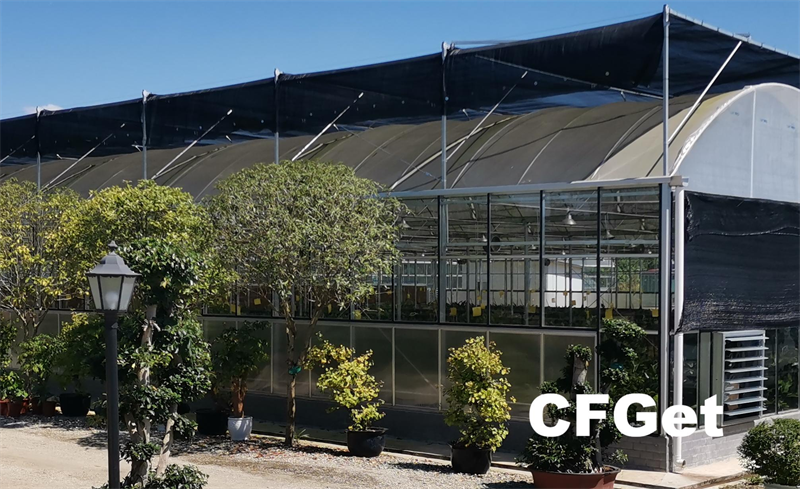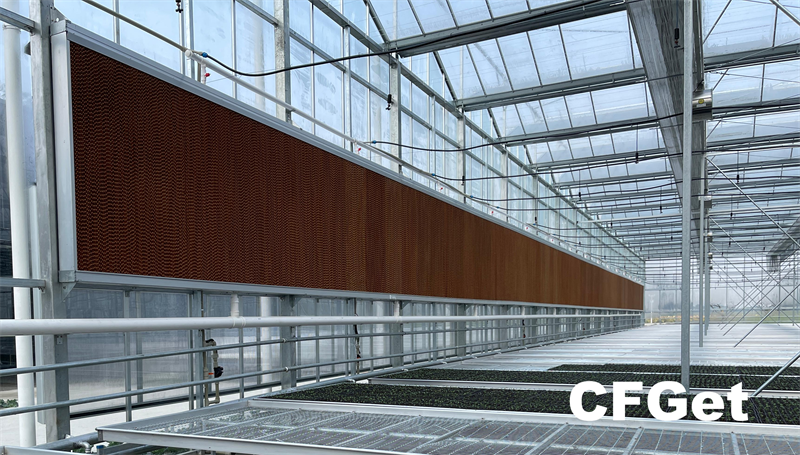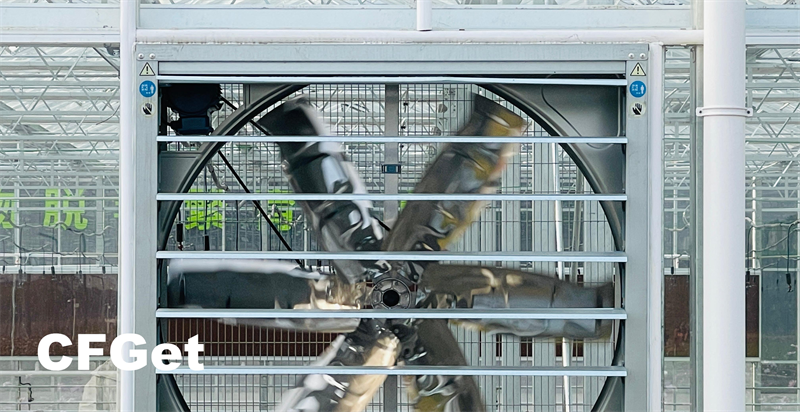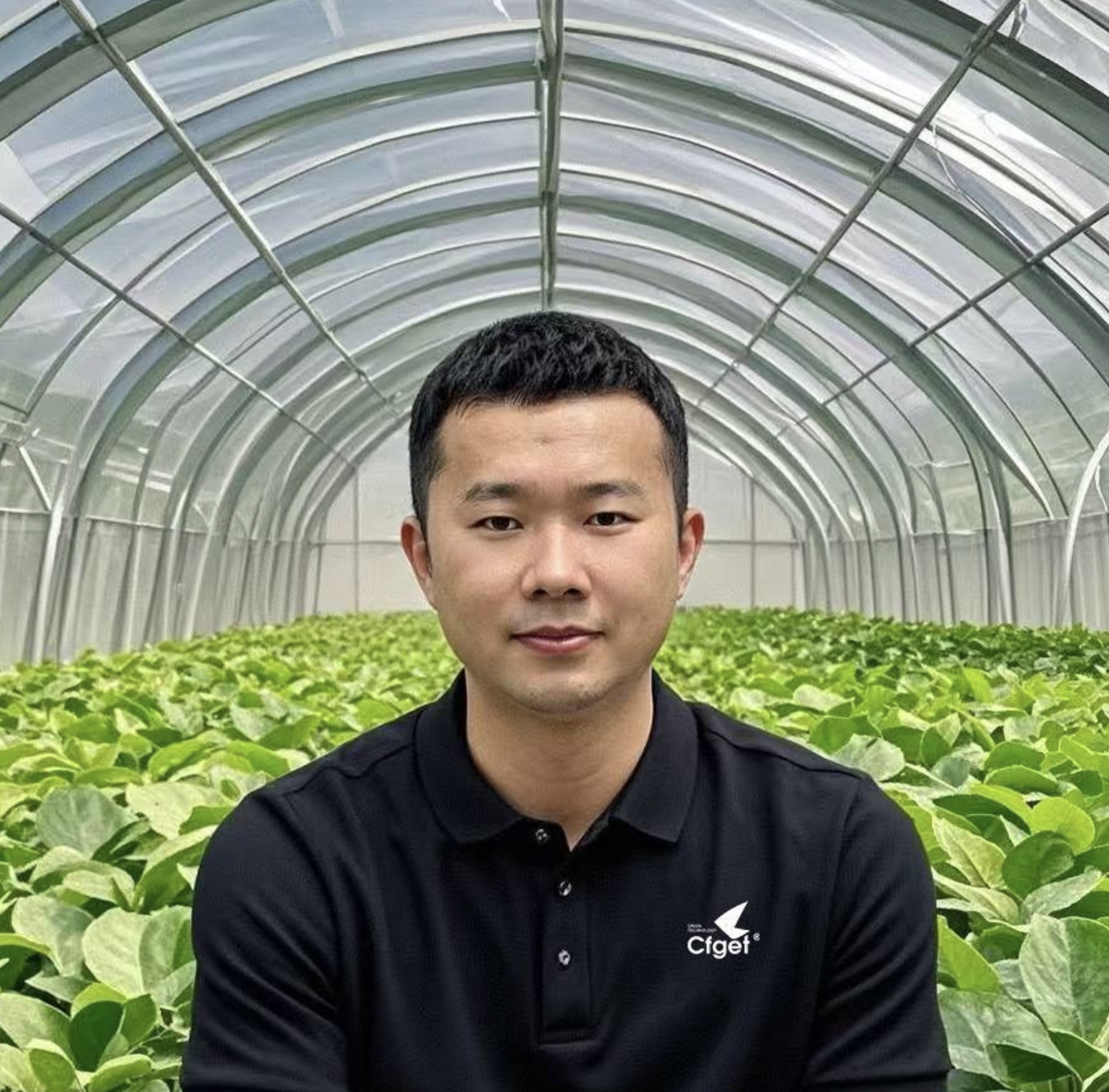Awọn ile alawọ ewe jẹ awọn irinṣẹ pataki ni iṣẹ-ogbin ode oni, ti a lo ni lilo pupọ fun dida ẹfọ, awọn ododo, awọn eso, ati ọpọlọpọ awọn irugbin miiran. Wọn ṣẹda agbegbe iṣakoso ti o fun laaye awọn eweko lati ṣe rere paapaa ni awọn ipo oju ojo ti o kere ju ti o dara julọ. Bí ó ti wù kí ó rí, nígbà tí ó bá kan ọ̀rọ̀ títẹ̀ ewéko, ìbéèrè kan sábà máa ń wáyé: Ǹjẹ́ afẹ́fẹ́ ilé kan gbọ́dọ̀ jẹ́ kí afẹ́fẹ́ múlẹ̀ pátápátá?
Lakoko ti awọn eefin airtight le mu ooru mu ni imunadoko, eefin eefin ti o ni kikun ko wulo. Ni otitọ, ṣiṣan afẹfẹ to dara jẹ pataki fun ilera ọgbin. Jẹ ki a ṣawari idi ti fentilesonu ṣe pataki ninu apẹrẹ eefin ati bii o ṣe ṣe alabapin si agbegbe ti o gbilẹ fun awọn irugbin.

1. Kini idi ti awọn ile eefin nilo fentilesonu to dara
Ibi-afẹde akọkọ ti eefin kan ni lati pese agbegbe ti o gbona, ọrinrin fun awọn irugbin lati dagba. Sibẹsibẹ, ti eefin kan ba wa ni pipade patapata, o le ja si ọpọlọpọ awọn iṣoro. Ọrọ pataki julọ ni idinku ninu awọn ipele carbon dioxide (CO2), eyiti o ṣe pataki fun photosynthesis. Laisi CO2 ti o to, awọn ohun ọgbin kii yoo ni anfani lati ṣe photosynthesis daradara, fa fifalẹ idagbasoke wọn.
Ni akoko kanna, agbegbe ti a fi edidi yoo mu awọn ipele ọriniinitutu pọ si inu eefin. Ọriniinitutu giga le ṣe agbega idagbasoke ti mimu ati awọn ajenirun, eyiti o le ba awọn irugbin jẹ ati dinku awọn eso irugbin. Fentilesonu to dara ṣe iranlọwọ lati ṣatunṣe awọn ipele ọriniinitutu, idilọwọ awọn ọran wọnyi lati dide. Nipa aridaju ipese igbagbogbo ti afẹfẹ titun, fentilesonu ti o dara ṣe atilẹyin awọn ipele CO2 mejeeji ati iṣakoso ọrinrin, ṣiṣẹda agbegbe idagbasoke pipe.

2. Ṣiṣakoṣo awọn iwọn otutu ni eefin kan
Mimu iwọn otutu ti o tọ jẹ ipenija miiran fun apẹrẹ eefin. Lakoko ti o ṣe pataki lati jẹ ki iwọn otutu gbona to fun idagbasoke ọgbin, eefin ti o ni kikun le di gbona pupọ. Gbigbona igbona le ba awọn irugbin jẹ, paapaa ni awọn ọjọ ti oorun nigbati afẹfẹ kekere ba wa. Lati yago fun eyi, awọn eefin ode oni jẹ apẹrẹ pẹlu awọn atẹgun adijositabulu, awọn onijakidijagan, tabi awọn ọna ṣiṣe adaṣe ti o ṣe iranlọwọ lati ṣakoso iwọn otutu. Awọn ọna ṣiṣe wọnyi gba afẹfẹ gbigbona laaye lati sa fun ati alabapade, afẹfẹ tutu lati ṣan sinu, mimu agbegbe itunu fun awọn irugbin.
3. Awọn ipa ti Airflow ni ọgbin Growth
Ṣiṣan afẹfẹ kii ṣe pataki nikan fun iṣakoso iwọn otutu ati ọriniinitutu; O tun ṣe ipa pataki ni ilera ọgbin. Ṣiṣan afẹfẹ ti o tọ ṣe iranlọwọ lati fun awọn irugbin lagbara nipasẹ didari gbigbe ti afẹfẹ ni ayika wọn. Eyi le dinku iṣeeṣe ti awọn arun ti o fa nipasẹ afẹfẹ isunmọ ati mu agbara ọgbin lapapọ pọ si. Ni afikun, ṣiṣan afẹfẹ deede ṣe iranlọwọ kaakiri CO2 ni deede jakejado eefin, ni idaniloju pe gbogbo awọn irugbin ni aye si awọn orisun ti wọn nilo fun idagbasoke ilera.

4. Eefin Design: Iwontunwonsi Airtightness ati fentilesonu
Apẹrẹ eefin ti o dara julọ kọlu iwọntunwọnsi laarin jijẹ airtight to lati da ooru duro ati ategun ti o to lati gba fun paṣipaarọ afẹfẹ. Ibi-afẹde ni lati ṣẹda agbegbe ti o ṣe atilẹyin idagbasoke ọgbin laisi nfa igbona pupọ tabi awọn ọran ọriniinitutu. Ọpọlọpọ awọn eefin igbalode, gẹgẹbi awọn apẹrẹ nipasẹAwọn ile eefin Chengfei, Ṣafikun awọn ọna ẹrọ atẹgun adijositabulu ti o ṣii ati pipade ti o da lori iwọn otutu, ọriniinitutu, ati awọn ipele CO2. Eyi ṣe idaniloju pe agbegbe eefin duro laarin awọn ipo ti o dara julọ fun idagbasoke ọgbin.
Awọn ile eefin Chengfeiṣe amọja ni ipese awọn solusan eefin aṣa pẹlu awọn ọna ṣiṣe fifun gige-eti, ni idaniloju pe awọn ohun ọgbin gba iwọntunwọnsi pipe ti igbona, ọriniinitutu, ati afẹfẹ titun fun idagbasoke idagbasoke.
Kini Kokoro si Ile-iṣọ Eefin kan?
Awọn kiri lati a thriving eefin ni ko airtightness; o jẹ nipa ṣiṣẹda agbegbe iwọntunwọnsi nibiti iwọn otutu, ọriniinitutu, ati didara afẹfẹ ti wa ni iṣakoso ni pẹkipẹki. Fentilesonu to dara jẹ pataki fun ilera ọgbin, ati pe o gba laaye fun iṣakoso to dara julọ ti awọn ipele CO2 ati ọrinrin. Nipa idoko-owo ni awọn apẹrẹ eefin ti o gbọn pẹlu awọn ọna ṣiṣe atẹgun adijositabulu, o le rii daju pe eefin rẹ ṣe atilẹyin ilera, awọn ohun ọgbin to lagbara ni gbogbo ọdun yika.
Kaabo lati ni kan siwaju fanfa pẹlu wa.
Email: info@cfgreenhouse.com
l #Gẹẹtinanti ile alawọ ewe
l # Iṣakoso otutu ile
l # CO2levelsingreenhouse
l #ChengfeiGreenhouses
l #apẹrẹ alawọ ewe
l #awọn ile gbigbe ohun ọgbin
l #bestgreenhouse awọn ọna šiše
Akoko ifiweranṣẹ: Oṣu kejila-16-2024







 Tẹ lati iwiregbe
Tẹ lati iwiregbe